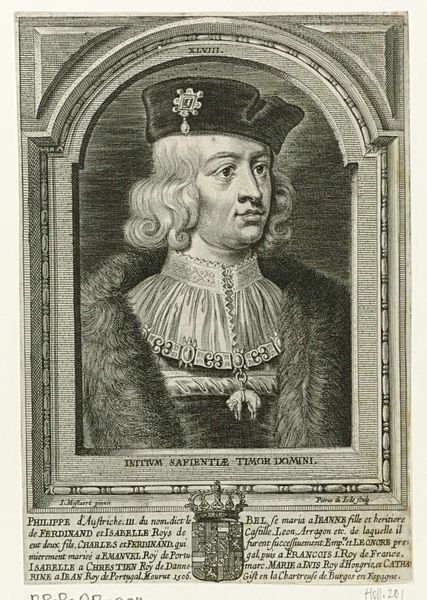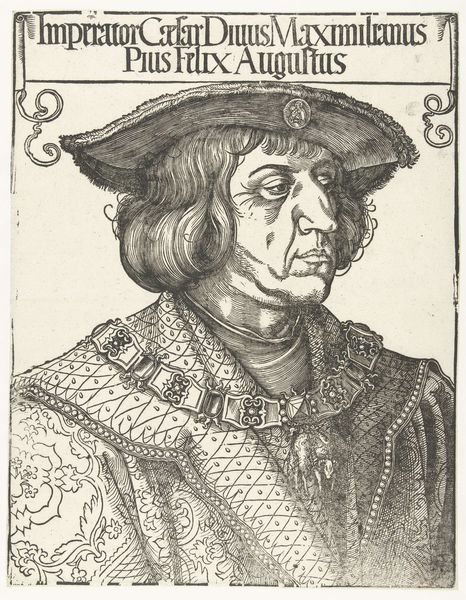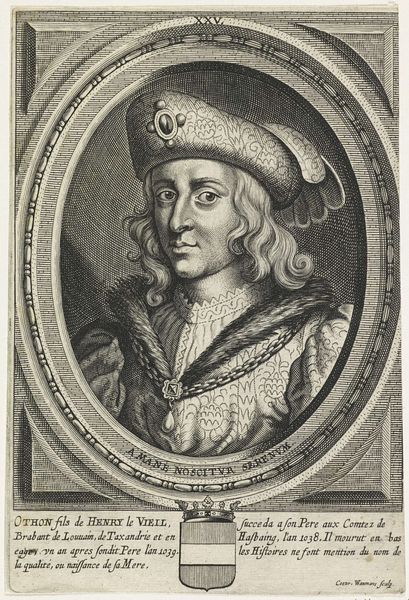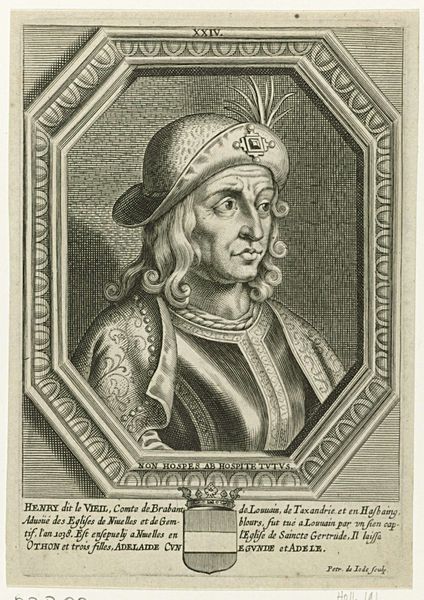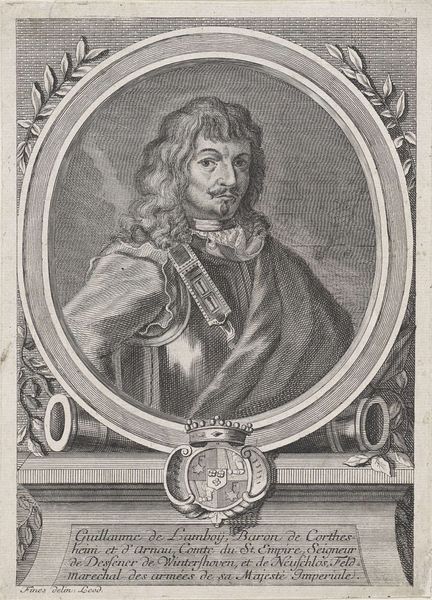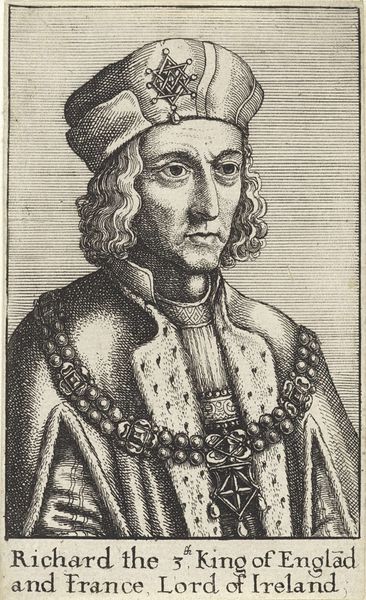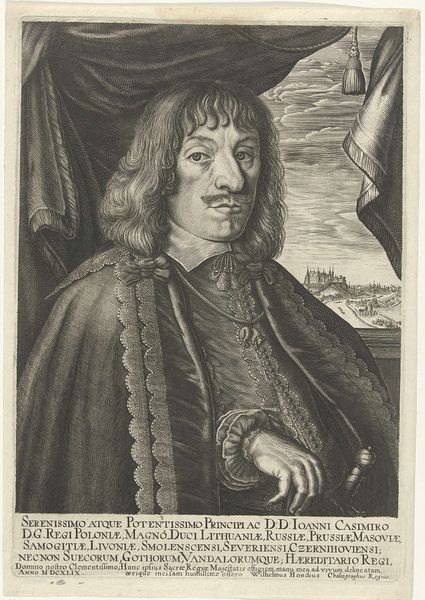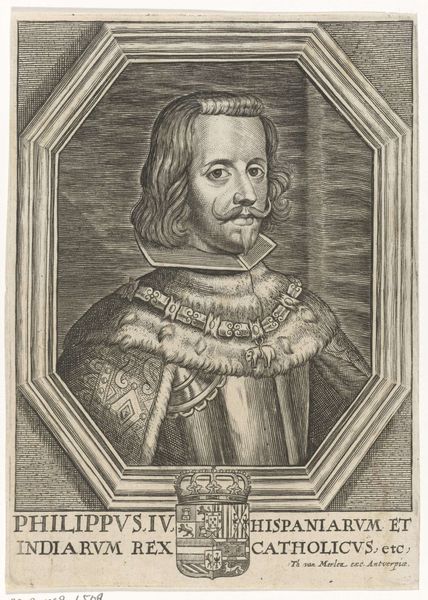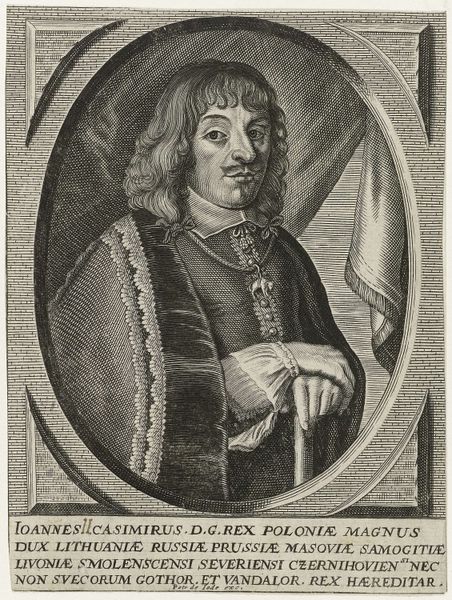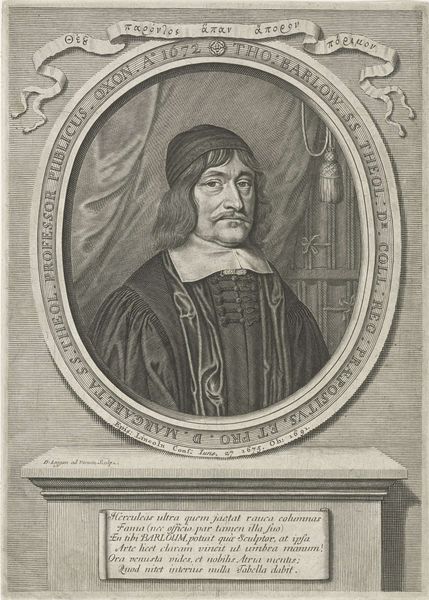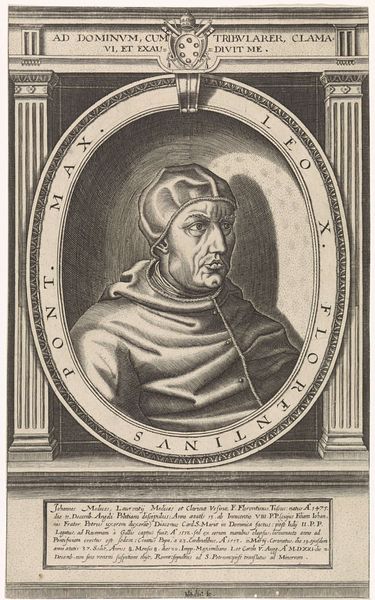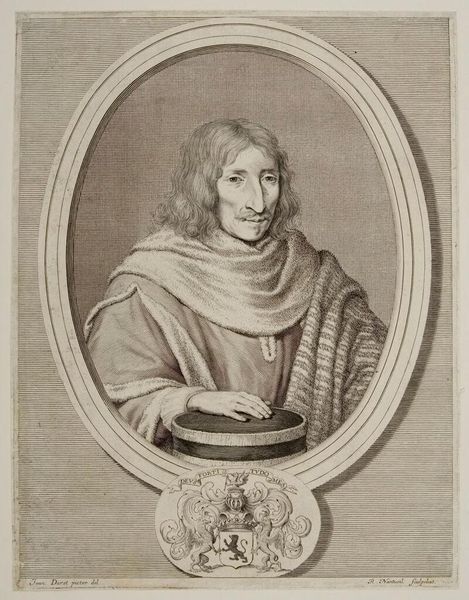
print, engraving
#
portrait
# print
#
figuration
#
11_renaissance
#
line
#
history-painting
#
northern-renaissance
#
engraving
Dimensions: height 173 mm, width 120 mm
Copyright: Rijks Museum: Open Domain
Editor: Here we have a print of “Portret van Maximiliaan I van Oostenrijk” or "Portrait of Maximilian I of Austria," by Pieter de Jode II, made after 1661. It is an engraving. There's something rather imposing about the figure, yet also distant, perhaps due to the engraving style. What do you see in this piece? Curator: It's compelling to view this portrait through the lens of power and representation in the Renaissance. How does this depiction uphold or challenge traditional patriarchal structures? The very act of commissioning and creating portraits was historically a means of asserting dominance and perpetuating a specific narrative, particularly in a figure such as Maximilian I. Editor: I see what you mean. Can you say more? Curator: The rigid lines of the engraving, coupled with the Latin text surrounding his figure, convey authority and the historical weight. Consider the role of the artist, Pieter de Jode II, in either reinforcing or subtly critiquing this image of power. How do the symbols – his clothing, his jewelry, and the architectural setting – speak to the intersection of identity, class, and political authority during this era? Does the choice to depict Maximilian with what looks like an almost sad demeanor affect that power dynamic? Editor: It really makes you think about the intent behind these portraits. I hadn't considered how the style and the choice of medium contribute to this construction. Curator: Precisely! We can use the image to question traditional art historical narratives, uncovering potential challenges or subversions of these entrenched power structures, looking closely at social dynamics during that historical moment. Editor: I learned a lot about how a portrait like this is communicating much more than just a likeness! Curator: Absolutely, it serves as a cultural artifact reflecting its time, with complex ideas about gender, power, and historical representation.
Comments
No comments
Be the first to comment and join the conversation on the ultimate creative platform.
